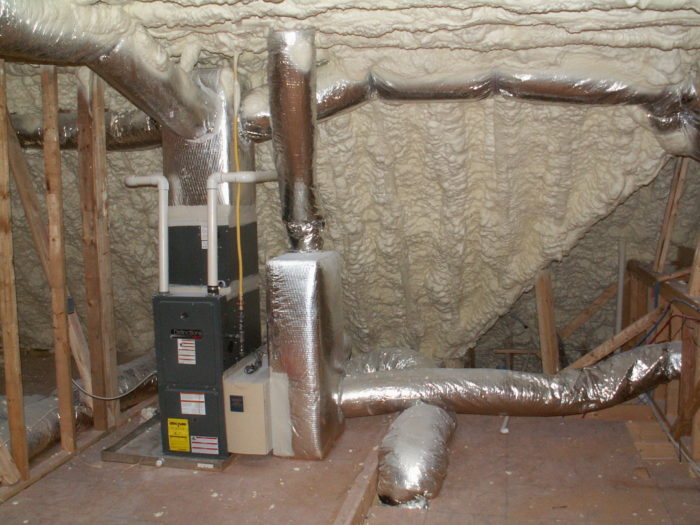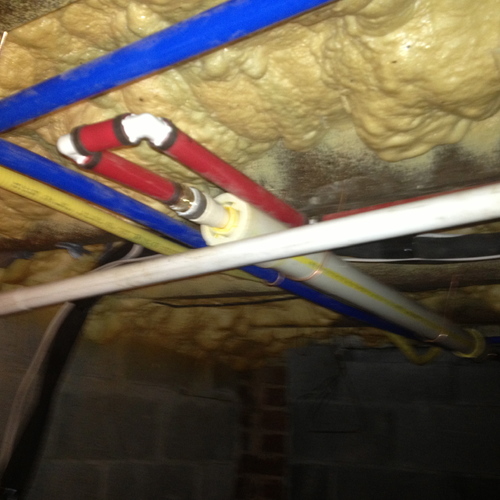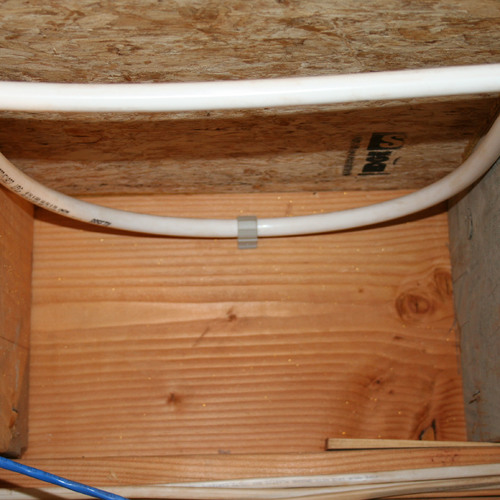I still remember using spray foam insulation in my early green renovation projects – it was almost magic! It sealed and insulated in one shot. It made it easy to finish attics and avoid most of the problems with fiberglass batts that were the common insulation on our jobs.
I quickly became an advocate for spray foam, recommending it to clients regularly with excellent results. It was, and still is, a very good solution to certain problems in construction, particularly when used to create an insulated, semi-conditioned attic. This makes a big difference in building performance here in the south where almost everyone has an HVAC system in the attic.
It was always fun to see the amazement of both homeowners and professionals checking out comfortable, insulated Atlanta attics in the summer. After they experienced this first hand, it wasn’t that hard to convince people to pay for spray foam.
Beyond spray foam
Recently, however, I’ve been revising my opinion on spray foam, as well as many other common and high profile “green” products. Not that I think spray foam is a bad product, rather that I have grown to see it as an easy way around bad design decisions, particularly in new homes.
In renovations, particularly attic expansions, spray foam may well be the most appropriate insulation, but most new homes can have excellent performance with proper design and construction using more traditional materials. If we keep mechanical equipment out of attics and crawlspaces, avoid conditioned attics, and design building envelopes that can be simply air sealed and insulated, almost any insulation will work just fine. Spray foam is just one of many products out there that can be part of a high performance building, but it certainly isn’t the best or only solution.
Tankless heaters and PEX aren’t the only answers
My evolution in thinking also includes products like tankless water heaters and PEX manifold piping. Tankless water heaters and PEX manifolds are both hot items in green building, and many people believe they are required in high performance homes. But as I have learned from both personal experience and industry pros like Gary Klein, the water heater is just one part of an efficient system, one in which the piping is at least as important as, if not more important than, the heater itself.
And as Gary has demonstrated in articles and presentations, PEX manifold piping is not the panacea that many believe it is. Manifold piping can be installed just as badly as any other system, wasting lots of water and energy in the process. There is nothing wrong with tankless heaters or PEX piping, but just like any other good product, they must be considered as part of the entire house system, and be installed properly, to work efficiently.
Why have we forsaken wood?
Fiber-cement siding is common “green” product that gets a lot of attention for its durability, but this durability comes at a cost. It isn’t recyclable and won’t deteriorate for generations, if ever. Few installers take the proper safety precautions while working with it, putting them at risk from inhaling the dust created from cutting the material.
Fiber-cement has been hailed as a green alternative to wood siding and trim products, but when we look at the pros and cons, it seems like wood offers a better, if sometimes more expensive, solution. Wood is renewable and reusable after deconstruction; it deteriorates in landfills, doesn’t create the same level of health hazards in manufacture and installation, and, when installed well and properly maintained, is pretty durable.
Every day I learn something new about green building, layering the accrued knowledge over the months and years, and using it to come to new opinions on a regular basis. I enjoy what I learn from others in the industry and appreciate how it affects my opinions. Maybe, like many politicians, I’m just a flip-flopper, but I can live with that if it ultimately leads me to making better decisions.
Weekly Newsletter
Get building science and energy efficiency advice, plus special offers, in your inbox.














5 Comments
Kudos to Carl
Carl, I really admire you for "Rethinking"
I think Spray Foam is a shortcut/bandaid to Not-So-Bad performing homes.
I think we (especially Southerners) should be developing better (not-so-foamy) Air Control Strategies...and using more affordable Higher R-value Assemblies in order to tame/minimize the HVAC monster.
I think there is a future in very compact HVAC (ducted mini-splits) and or ductless mini-splits.
I also agree with you about Rethinking Water Heaters ...Gary Klein is the Water Heater Guru
I never drank the tankless
I never drank the tankless Kool-ade. Small tanks limit consumption and we should be going solar.
PEX, i like.
Split air yes.
Foam, has its place.
Southerners build funny. Vented crawls and 165 degree attics stuffed with AC, what are ya thinkin down tharr? Ya all have Duke Energy holdings?
Green, the new green is supposed to be $$$ doing righteous earth saving work. Hopefully the old green is mold issues someday going away via Lstiburek and company finally telling great jokes with perfect technics sprinkled liberally about.
Size of Renovations?
Carl, you mention foam still being a fix in renovations were green principles weren't necessarily applied during the conception of the structure. In your experience what's the average size of these renovations? Is it small enough for you to tackle with a froth kit or are you having to call out a truck mounted spray rig?
Renovations
Patrick - the point I was trying to make about appropriate designs considered in the design phase was more directed at new homes. With a little bit of thought, it would be pretty easy to put all the mechanicals in conditioned space, avoiding the need for installing spray foam on the roofline. Renovations are more challenging, particularly when finishing existing attic spaces. There are always options to using spray foam, however they often are much more labor intensive to get the same level of air sealing.
Deconstruction
Carl - I appreciate the "re-thinking" around the use of spray foam. I'm hopeful of a future that includes deconstruction and material separation and re-use. As we look ahead and tackle the issues around the need to retrofit existing and improve air sealing and insulation on future projects, solutions that create one big sticky, foamy mess will preclude the possibility of disassembly, separation and re-use.
Even if a high degree of re-use does not become economically possible, the ability to safely compost untreated, un-SPF'ed framing lumber and sheet goods is a healthier option to handle future construction waste.
I've been working with a German OSB and woodfibre boards lately and one of the pleasant things I've learned is that they have removed all urea-formaldehyde from engineered sheet goods. It's now possible to build an entire structure with the sheet goods and sawn lumber with no worry of off gassing. The further benefit is that the material is rated on the product literature as safe for use as firewood (as is, or ground into pellets). Wouldn't it be nice to be able burn site OSB fall or deconstruction (someday) in your wood stove at home?
All of these material combinations, and how, and where we choose to use them, do affect a wider system than the narrow application we consider at the jobsite. Not to say that SPF is not a good solution for some applications, but Like XPS it should be used judiciously and not as a fix-all.
Log in or create an account to post a comment.
Sign up Log in